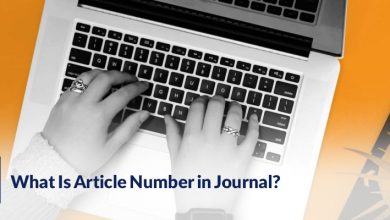How To Mention Corresponding Author in Paper?

What is the difference between the lead Author and the corresponding Author? How can you mention them in a paper?
The corresponding Author acts as the point of contact, guiding the manuscript through the intricate dance of submission, review, and publication. But how do you correctly identify this crucial role within your paper?
How can you mention the corresponding Author in your article? If you don’t, you are at the right place. Follow this section until the end; you will get all your answers.
Who Is the Corresponding Author & Lead Author?
You can look at these statements to distinguish between the lead and corresponding Authors.
In academic publishing, two crucial roles guide a manuscript:
- Lead Author: Drives the research intellect, contributing heavily to content and writing like a ship’s captain.
- Corresponding Author: Manages communication and administration, serving as the central contact point, most comparable to a ship’s radio operator.
They can be the same person, but often aren’t! Now, it is time to see the responsibilities that make them districts.
Lead Author’s responsibilities
- Conducts primary research: Performs experiments, analyzes data, and interprets results.
- Writes extensively: Drafts most of the manuscript and leads writing collaborations.
- Makes significant intellectual contributions: Drives the research direction and provides insights.
- May participate in submission and revisions, Depending on field and team dynamics.
Corresponding Author’s responsibilities
- Manages communication and paperwork: Handles submissions, revisions, and responses to reviewers.
- Serves as primary contact point: Fields questions from editors, reviewers, and readers.
- Ensures ethical compliance: Guarantees author contributions meet journal standards.
- Coordinates revisions with co-authors: Ensures everyone agrees on changes.
- Promotes the published work: Presents findings, attends conferences, seeks media coverage.
Now that you are familiar with the corresponding Author and their responsibilities, you can find out how to mention them in the article.
Ways to Mention Corresponding Author in Paper

Following the instructions below, you can highlight the corresponding Author in your research paper.
Identifying the corresponding Author is crucial for ensuring smooth communication and ethical authorship practices in research publications. Here are various ways to highlight this role, along with examples:
· Footnotes
This method is expected to mention the corresponding Author in humanities and social sciences. You can use a footnote at the bottom of the first page of your manuscript and refer to the Author’s name and contact details.
For example:
John Doe* (*corresponding author)
[email address]Department of Psychology, University of [Example]
· Superscripts
The other way to mention the corresponding Author, preferred in some scientific fields, is to place a superscript number next to the corresponding Author’s name and include their contact information in a related author section at the end of the manuscript.
For instance:
John Doe 1
—————————-
1[email address removed], Department of Biology, University of Research
· Author Guidelines
You can seek the guidance of the specific journal’s style guide. It is better to know that some journals have unique instructions for designating the corresponding Author, like dedicated sections or particular symbols.
· Acknowledgments
It is a less common method but acceptable. To mention the corresponding Author in an article, briefly mention their role in the acknowledgments section. Consider this if another method aligns better with the journal’s style.
Look at the example here:
The authors thank John Doe for his role as corresponding Author during manuscript preparation and submission.
These are the best methods to refer to the corresponding Author in an article. The section below contains some essential tips to help you even more.
Additional Tips While Mentioning the Corresponding Author:
- Make sure the corresponding Author’s contact information is accurate and up-to-date.
- If multiple authors share corresponding duties, you can use the “co-corresponding authors” term or separate footnotes/superscripts.
Now, how can they find the corresponding Author in a journal article? Look at the following section to get your answer.
Finding the lead and corresponding authors in a paper is straightforward. Most articles follow a standard format:
- Title
- Author names (The lead Author is often first)
- Author information (Placed below the names, it clarifies roles and affiliations.)
Hopefully, you have all your answers as it is time to conclude.
Read More: What Is Article Number in Journal?
Conclusion
Throughout this exploration, we have navigated the details of identifying the corresponding Authors in research publications and mentioning them.
By understanding the distinct responsibilities of communication management to academic leadership, we can ensure transparent and ethical authorship practices.
Whether you use footnotes, superscripts, or dedicated sections, following the chosen journal’s style guide is paramount.
Now it is time to share your experience and tell us if you have encountered any challenges or exciting experiences related to identifying the corresponding Author.

Please share your thoughts and insights in the comments below!



